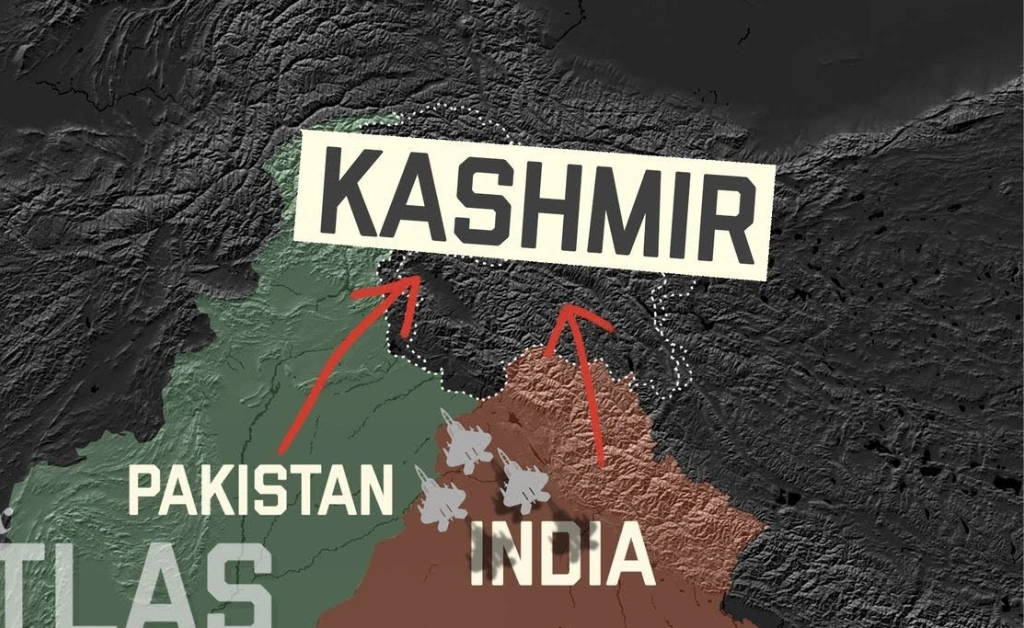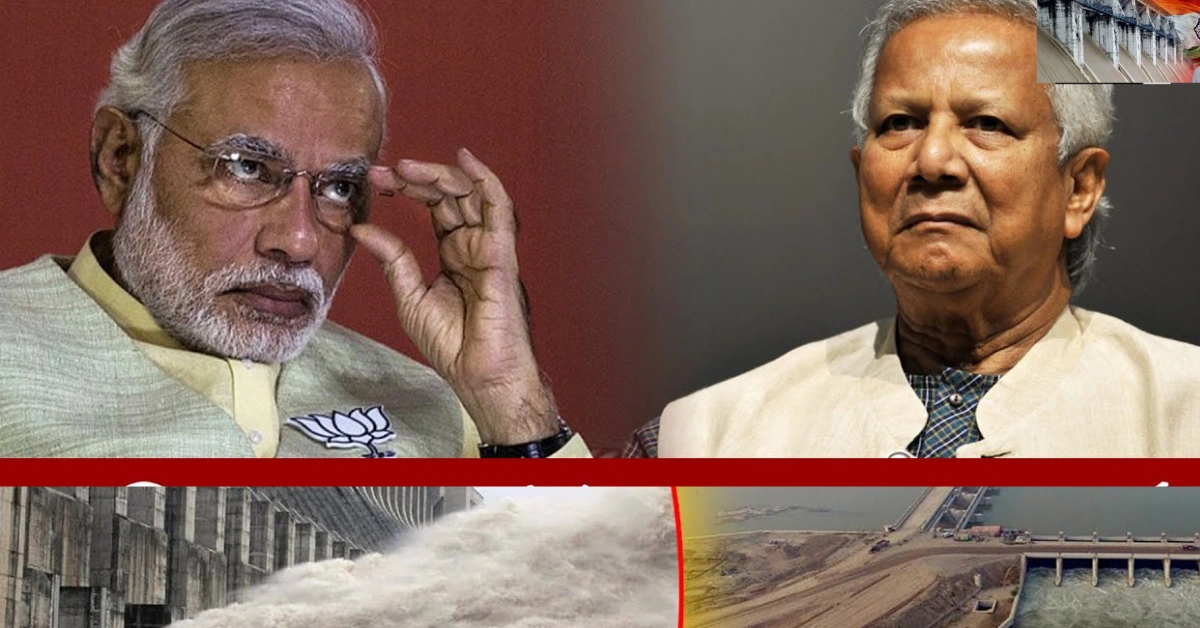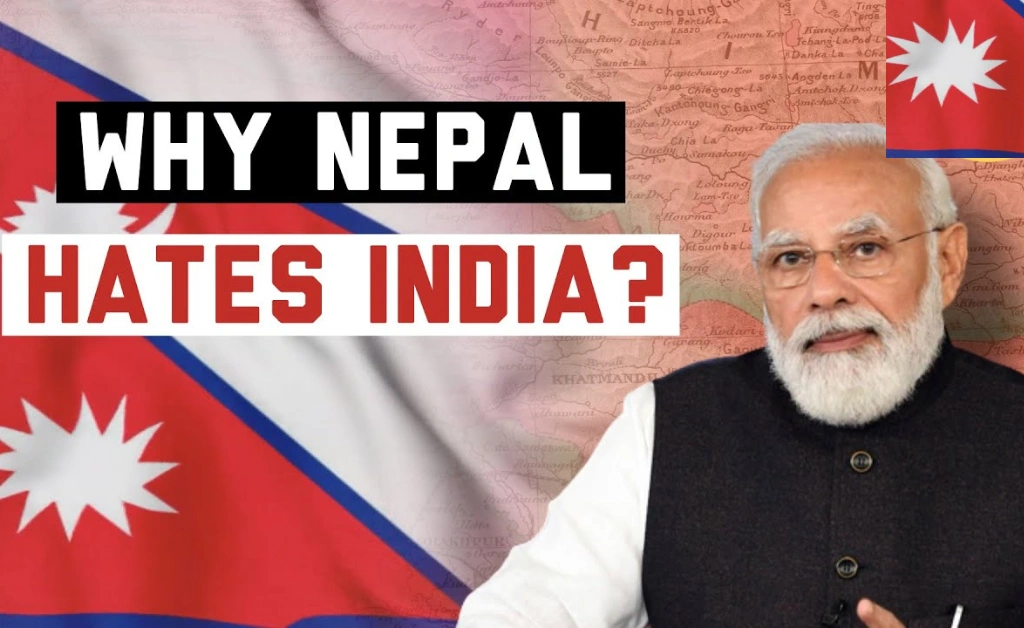Introduction:
Territory carries the identity of a state’s sovereignty. A state is limited to a certain territory. More than half of the world’s population lives in Asia. But it is a sad fact that except Thailand, almost all the countries in this region have been subjected to foreign rule-exploitation at one time or another. At the first Asian Relations Conference held in New Delhi in 1947, the then-Indian leader Jawaharlal Nehru said ‘A change is coming over the scene now and Asia is again finding itself. Land problems in Southeast and East Asia is one of the most concern topic in the present world.
The countries of Asia can no longer be used as pawns by others, they are bound to have their policies in world affairs.’ But half a century ago, the optimism of this leader has not been realized even today. Because the territorial problems of Asia, especially Southeast Asia and East Asia, are becoming more apparent day by day, and conflicts and mutual relations between countries have reached the level of bitterness. Here we will solve this question-what causes large clusters of people to inhabit southeast and east Asia.
TERRITORY PROBLEMS IN SOUTHEAST AND EAST ASIA:
Indeed, South Asia has been at the center of discussion over the past decade, especially since India and Pakistan resumed their nuclear race in 1998. Although India acquired nuclear power in 1974, Pakistan did not consider it a threat.

But in 1998, when India conducted a new nuclear weapons test in Pokhran, Rajasthan, at the same time India’s arch-rival Pakistan also conducted nuclear weapons tests in the Chagai mountain area of Balochistan in 1998 to consolidate the balance of power in the subcontinent. The problem has become evident since then. Besides, India has territorial problems with other countries. Below is an analysis of the nature of the territorial problem in Southeast Asia:
India and China:
India and China are two important countries in the Asian continent. If we understand the dynamics of India’s foreign policy towards China or China’s foreign policy towards India, we see sometimes the warmth of friendship, sometimes the indifference of unfriendliness. India-China’s main territorial dispute is over Tibet.
The way China suppressed the rights and aspirations of Tibetans in 1959, resulted in Tibetan Buddhist leader Dalai Lama taking refuge in India. During the period of British rule, it was decided that China’s sovereignty over Tibet would be recognized. Besides, some commercial facilities of India will be maintained inside Tibet.
The complex situation on the Sino-Indian border that started in 1959 culminated in 1962. On October 28 that year, China suddenly invaded the Nefa region of northeastern India, now known as Arunachal Pradesh and the Ladakh region of Kashmir. The attack was unexpected for unprepared India. In November 2006, through the Chinese President, China claimed that Arunachal Pradesh was part of Chinese territory.

China has never accepted the McMahon Line which was determined by the Shimla Convention in 1914, but this line is the effective boundary between India and China. India’s Minister of State for Defense M. S. Pallava Raju said in a statement in Guwahati on 23 May 2008 that India would never accept the territory claimed by China in Arunachal Pradesh and Sikkim.
According to the 1924 Boundary Survey of India Map, India has fixed its views on boundaries. The point is that satellite photos have recently shown that China has built 58 bases capable of launching nuclear-tipped ballistic missiles within its territory, with India as the sole target. As the relationship between these two countries has reached bitterness due to these issues, it has also become a cause of discomfort for other countries here.
India and Pakistan:
Much of the content of Indian foreign policy is built around India-Pakistan relations. Since the independence of India and the emergence of India and Pakistan, instead of peaceful coexistence, mutual mistrust has become the mainstay of relations. The dispute over the Kashmir issue, which started within two months of independence, has continued steadily to this day. It may be recalled that the then Maharaja of Kashmir, Hari Singh, signed the necessary agreement to annex Kashmir to India.

But the cycle of violence and violence that began with Pakistan’s invasion of Kashmir immediately after independence did not end with the Kargil War five decades later. When the Kashmir issue was presented to the United Nations by then-Indian Prime Minister Jawaharlal Nehru, it was decided that the future of the state would be decided by a referendum if the entire territory of Kashmir was free of foreign troops.
The part of Kashmir occupied by Pakistan is known as Azad Kashmir. Since then the Kashmir issue has reached a bitter stage. As expected by Pakistan, China first provided moral support to Pakistan and subsequently provided massive military support on the Kashmir issue. Note that Kashmir is located at the junction of China, Afghanistan, and the former Soviet Union.
India and Bangladesh:
The emergence of Bangladesh as an independent and sovereign state in South Asia is a historic event. The same problem is observed in relations with Bangladesh as with other neighboring states. Relations between India and Bangladesh have become increasingly bitter over the sharing of Ganges water.
Besides, there are some border and land-related problems between the two countries. Geographically Bangladesh is surrounded by India on three sides. Bangladesh has a total border length of 4,144 km with the country. There are disputes between the two countries on various issues like rivers.
Indiscriminate killing of Bangladeshi citizens by Indian forces BSF on the border, disputes over unoccupied land, incomplete borders, and enclaves are the real contentious issues of border relations. The Bangladesh-India border marked by barbed wire is like a wall of death. Because this border is guarded by BSF on behalf of India they brutally torture and kill unarmed Bangladeshis without any warning. 162 territories between Bangladesh and India are known as an enclave.

Of these, 111 Indian enclaves are located in Bangladesh and 51 Bangladeshi enclaves are located inside India. On the other hand, India has 3,024 acres of unoccupied land inside Bangladesh. The unoccupied land of Bangladesh inside India is 3,506 acres. Apart from these, the 6.50 km border between Bangladesh and India in the Dai Ghata, Latitila, and Bellunia regions remains unmarked.
To settle this dispute, on May 16, 1974, the then head of government of the two countries, Bangabandhu Sheikh Mujibur Rahman and Indira Gandhi signed the Land Boundary Agreement, 1974, to determine the border between Bangladesh and India, to settle the unoccupied land and to solve the enclave problem. The government of Bangladesh approved this agreement through the third amendment of the constitution on November 23 of the same year.

In 1990, India allowed Bangladesh to use the Three Bigha Corridor. Later, in 1992, a temporary solution to the Dahgram-Angarpota enclave issue was achieved through another agreement between Bangladesh and India. Necessary steps were taken to resolve the enclave problem during the Joint Border Action Day held in New Delhi on November 10-11, 2010.
Finally, on 5 April 2015, the Indian Cabinet approved the Historic Boundary Agreement and on 6 April it was ratified by the Lok Sabha. As a result, experts believe that the door to an acceptable solution to the border problem of both countries have been opened.
India and Nepal:
India and Nepal have been in a close relationship for a long time. Nepal is surrounded by China on one side and India on the other. That’s why Nepal is called Landlocked Country. An agreement signed between Nepal and India in 1950 states that India would set up 17 check posts to monitor the passes through Nepal, Tibet, and Bhutan.

On the other hand, China built the Kathmandu-Pokhari road in 1959 after getting permission from the Nepalese government. In fact, since the establishment of complete Chinese control over Tibet, India-Nepal relations have been increasingly troubled. A kind of rivalry between India and China is created around Nepal. This rivalry intensified after the disastrous defeat of Indian forces in China in 1962.
In 1972, Nepal declared its foreign policy to be equidistant from both China and India. But India could not accept this declaration of Nepal. In addition, the Maoists of Nepal Clans are a huge headache for India. Currently, the uncertainty of the political environment in Nepal has become a source of discomfort for India.
Bangladesh and Myanmar:
Recent riots between Buddhists and Muslims in Myanmar’s Rakhine state have strained relations between the two countries. The relationship between the two countries has now reached a point of bitterness over the maritime border and the Rohingya issue.
There is a kind of tension in the border area due to the arrest of Bangladeshi fishermen from the Naf River, the arrest and torture of Kathurias in Naikxyong Chari, the shipment of Yaba tablets to Bangladesh at a large rate, etc. Besides, many people were looking at the Bangladesh-Myanmar border for many other reasons.

As a result of Myanmar’s ‘Operation Nagamine Dragon’ in 1978, 200,000 Rohingya Muslims entered Bangladesh as refugees, a problem that has not been resolved to this day. Recently our Director General of BGB went to Myanmar. Then came the Deputy Foreign Minister of Myanmar. Thus, it is important to start a hotline between the two countries.
China and Bhutan:
Bhutan and India have close relations. 25 thousand square meters. Mr. Integrated Bhutan is adjacent to the Tibetan Plateau, Assam, and West Bengal in India. But like Nepal, various military complications are being observed in Bhutan. Because here too, China continues its efforts to expand its influence.
China claims 200 square miles of Bhutan on its map. In 1979, the Chinese army invaded large parts of western Bhutan. As usual, bilateral meetings between Bhutan and China have been held many times on the issue of Bhutanese territory. However, the border dispute has not been resolved to date.

China often raises questions about parts of Bhutan. In 1981, through India, and in 1984, China held border negotiations directly with Bhutan. Even after this, Bhutan-China had many discussions but no settlement was reached. Bhutan once had regular trade with Tibet through various passes. The closeness of Tibet with Bhutan is easily conceivable due to its religious, cultural, and anthropological makeup. But because of China, it is in trouble.
Conclusion:
The territorial dispute in Southeast and East Asia has been going on for a long time. Due to the aggressive attitude of the rising power India on one side and the dominant China on the other side, the territorial issues between the countries of South Asia are becoming evident day by day. Needless to say, these are the reasons for the problem in this region.
Because 14 countries have border connections with China. As a result, China wants to dominate those areas. On the other hand, India is also a very large and populous country. Bangladesh is surrounded by India on three sides. As a result they are claiming their ownership over the territory along with creating various problems along the border.
In this situation, instead of friendly relations between the countries of Southeast Asia, the relationship of hostility is being revealed day by day. As a result, due to the territorial problem, various militant organizations are becoming active and they can continue their terrorist activities freely. So it is very important to solve this problem immediately. For this, China and India have to play a leading role. Friendly relations with all should be strengthened by abandoning the domineering attitude among them. One must refrain from attacking and occupying one’s sovereignty, especially the territory. Only then all problems can be expected to be solved.

I’m extremely impressed along with your writing abilities as smartly as
with the structure on your blog. Is that this a paid subject or
did you modify it yourself? Anyway keep up the excellent high quality writing,
it’s rare to peer a nice weblog like this one today.
Tools For Creators!